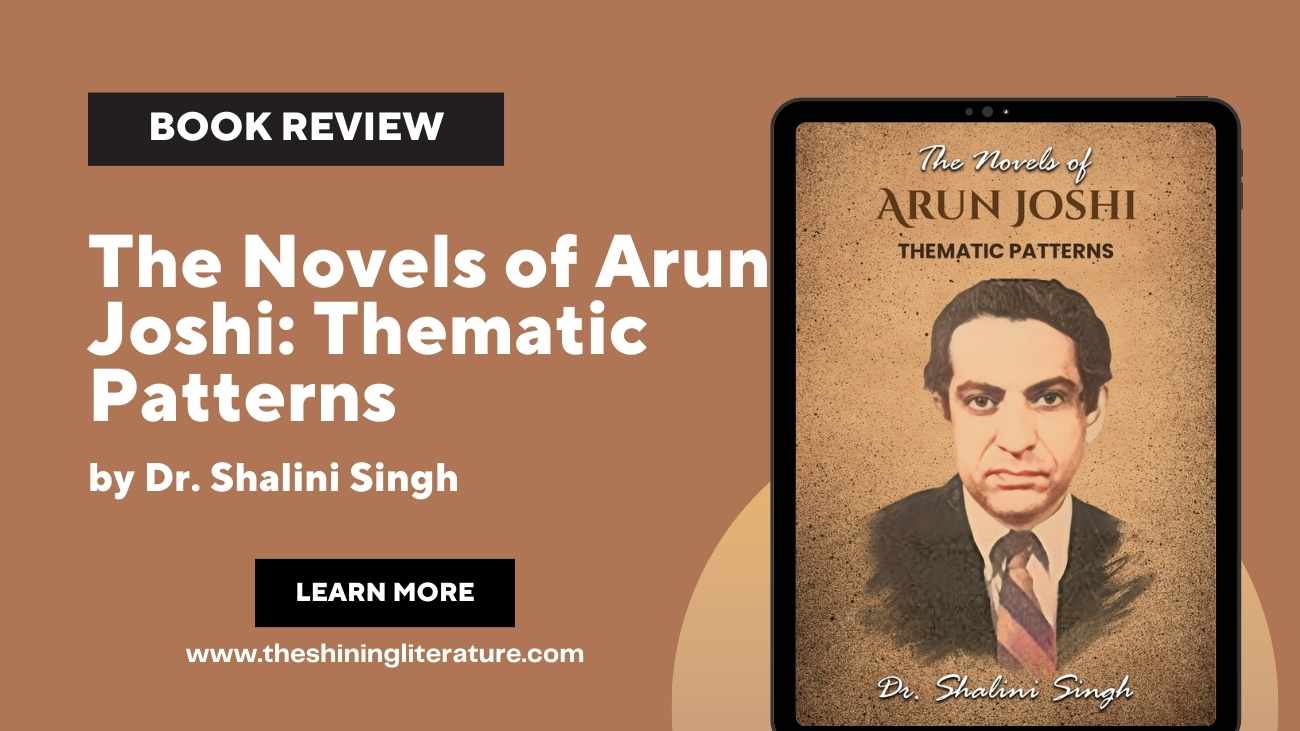A Review of “The Novels of Arun Joshi: Thematic Patterns” by Dr. Shalini Singh
In “The Novels of Arun Joshi: Thematic Patterns,” Dr. Shalini Singh embarks on a scholarly journey to dissect the intricate thematic tapestry woven by one of India’s eminent novelists, Arun Joshi. With meticulous analysis and profound insight, Singh delves into the depths of Joshi’s literary creations, shedding light on the profound ideas and artistic brilliance encapsulated within.
Arun Joshi, revered as a luminary in Indian English literature, stands out for the breadth and depth of his ideas, as well as the sophistication of his artistry. Through a meticulous examination of Joshi’s novels, Singh unveils the recurrent theme of twentieth-century man’s existential dilemma and its profound reverberations in society. Joshi’s exploration of the erosion of religious faith, cultural disintegration, and social alienation resonates deeply in today’s tumultuous times, making his message all the more pertinent and compelling.
Drawing from her extensive experience as a scholar and educator, Dr. Shalini Singh provides readers with a comprehensive understanding of Joshi’s thematic preoccupations and artistic techniques. Through her lucid prose and insightful commentary, she navigates through Joshi’s literary landscape, unraveling the layers of meaning and significance embedded within each work.
What sets this book apart is not only its scholarly rigor but also its accessibility to a wide range of readers. While rooted in academic discourse, Singh’s analysis is presented in a manner that is engaging and approachable, making it equally valuable to students, scholars, and enthusiasts of Indian literature alike.
One of the most commendable aspects of Singh’s analysis is her ability to situate Joshi’s work within the broader socio-cultural context of contemporary India. By contextualizing Joshi’s themes within the backdrop of societal changes and existential anxieties, she offers readers a nuanced understanding of the relevance and timeliness of his literary oeuvre.
Furthermore, Singh’s deep appreciation for Joshi’s artistry shines through in her examination of his narrative techniques, character portrayals, and thematic nuances. She adeptly explores Joshi’s use of symbolism, allegory, and irony, illuminating the layers of complexity that enrich his storytelling.
In addition to her scholarly analysis, Dr. Shalini Singh offers readers a glimpse into her own background and scholarly journey. As a Ph.D. holder in English Literature with years of teaching experience, Singh brings a wealth of expertise and passion to her exploration of Joshi’s novels. Her personal connection to modern themes such as alienation and existentialism adds depth and authenticity to her interpretation of Joshi’s work.
Overall, “The Novels of Arun Joshi: Thematic Patterns” stands as a testament to Dr. Shalini Singh’s scholarly prowess and her deep appreciation for the literary legacy of Arun Joshi. Through her insightful analysis and eloquent prose, Singh not only enriches our understanding of Joshi’s novels but also reaffirms their enduring significance in the landscape of Indian literature.
In conclusion, Dr. Shalini Singh’s book is a must-read for anyone seeking to explore the depth and complexity of Arun Joshi’s literary universe. With her erudite scholarship and profound insights, Singh invites readers on a captivating journey through the thematic patterns that define Joshi’s enduring legacy.




